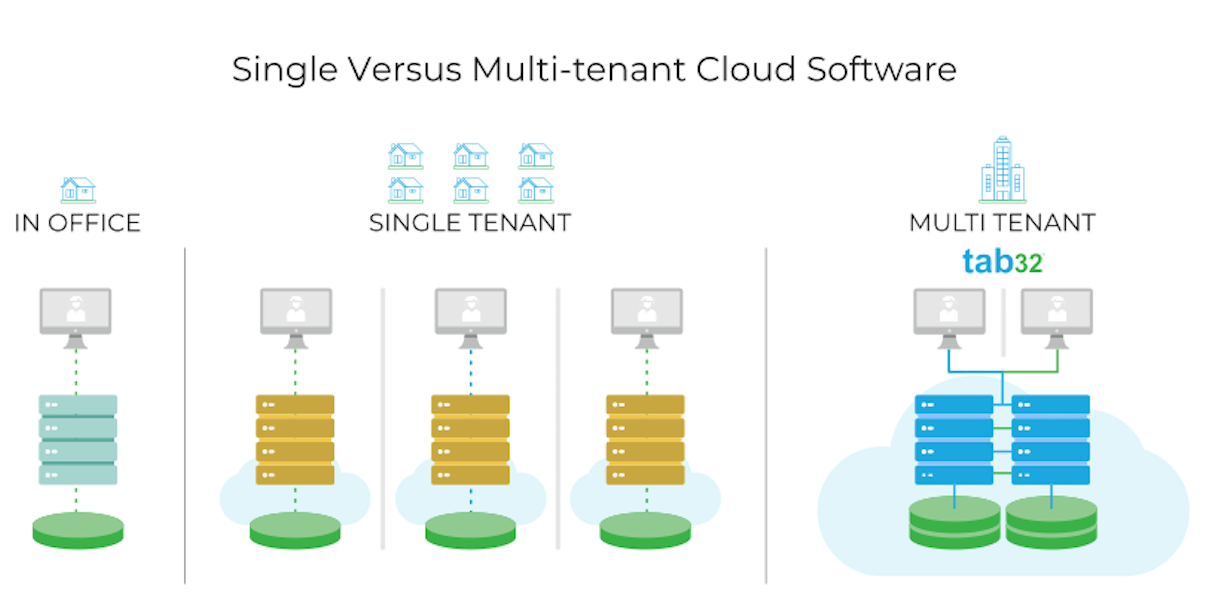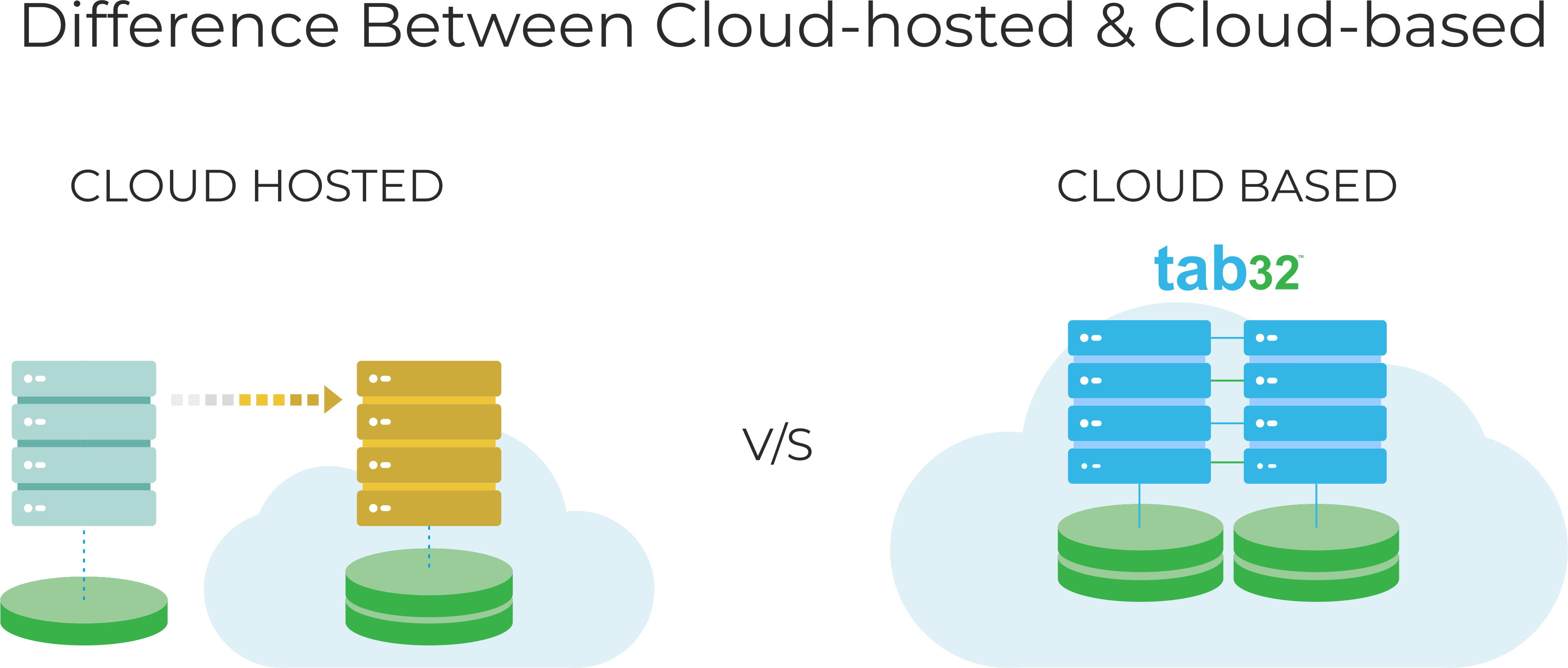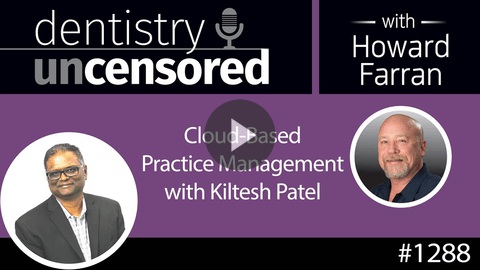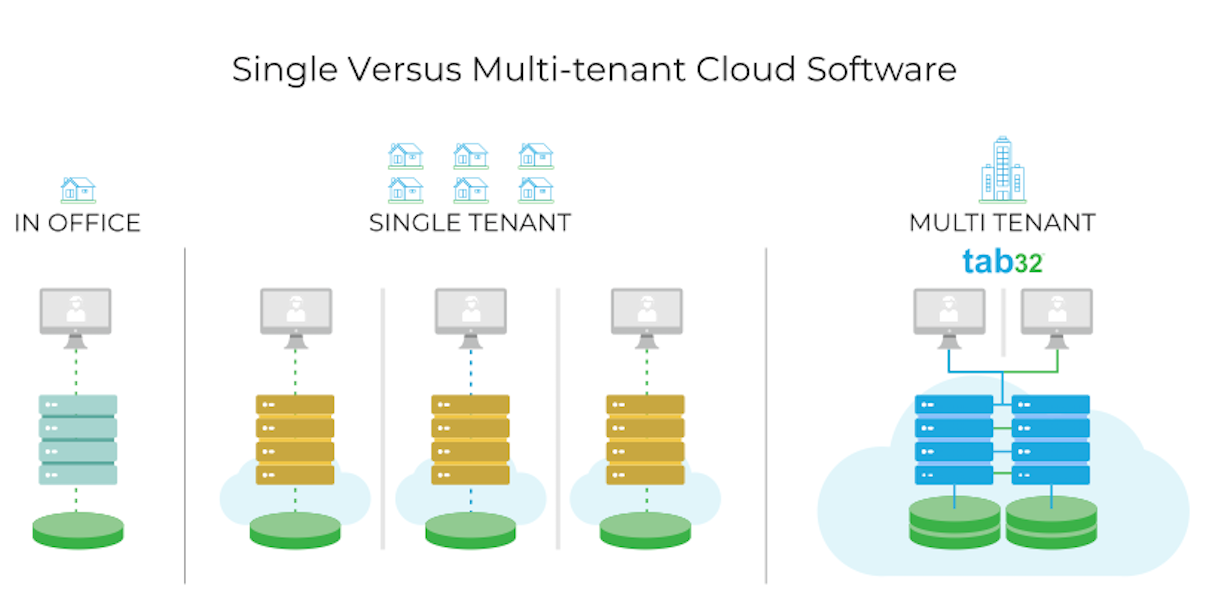Technology is moving rapidly. Hewlett Packard and Dell have started pulling consumer based hardware (in-office servers) off the market. In the same way Microsoft is no longer servicing Windows 7 past January 2020.
Interested in learning more about tab32? Book a free demo with a solutions rep today, just click here!

In-office servers will eventually suffer the same fate. Moving to the cloud is no longer a question of "if" but "when".
It's impossible to make an informed decision if one doesn't understand the intricacies of technology evolution. The technologies that served dentists in the 90's and early 2000's are rapidly aging out, and the few solutions left in the market have a similar infrastructure to in-office servers.
Which could leave some dentist investing in a short term solutions for a long term problem.

To begin one must understand the subtle, yet importance of single vs multi-tenancy computing.
- Single-tenant solutions will cost more over time to scale because the single-tenant machine is just a hosted version of an in-office server in the cloud. Such architectures can be accessed through vpn or even web-browsers. Similar to your in-office servers, update roll-outs on single tenant systems are tedious and inefficient because they inherit the same coding limitation as legacy systems.
- Multi-tenant systems are highly efficient because the computing architecture is built from the ground-up in a “truly” cloud environment; which is aggregated for large scale usage making it cost effective and highly scalable.
A community of houses vs a community of sky-rise condos. Everyone still has a key but each floor is highly customizable.

Just because something is cloud hosted doesn't mean it is cloud based.
- Because servers are rented out individually, single tenant systems are merely cloud-hosted. Cloud hosted solutions require a lot of maintenance, can cost more and will eventually stall in innovation because they won’t be able to compete/evolve at the same computing rate that a multi-tenant application can. Ultimately creating slowness, outdated workflows and uncomfortable UX designs...think web-based applications built 10+ years ago
- Truly cloud based systems have only been around more recently. Cloud-based systems are built to scale, cost effective and highly flexible because this software-as-a service is developed using a computing platform-as-a-service infrastructure like lambada, big data and big query designed to address the needs of giga and petabytes of large computing needs. This gives users speed and developers the flexibility to continuously innovate.
The reality is that practice management is a long term investment and needs to be evaluated within that lens. Business owners want to be partnering with platforms who's values align and who are committed to innovation.
For a deeper dive you can check out our CEO's, Kiltesh Patel's, interview with Howard Farran.





No Comments Yet
Let us know what you think